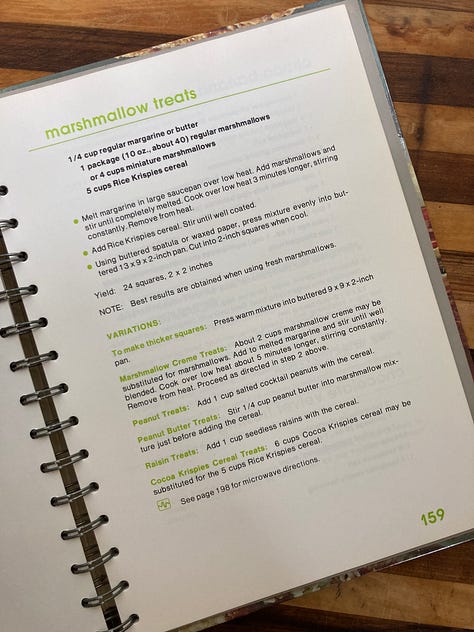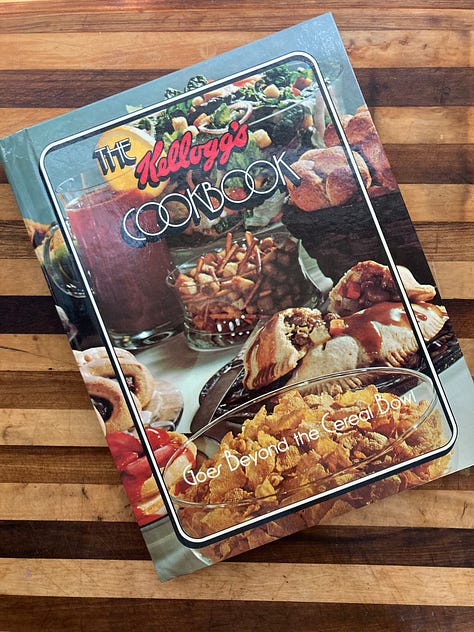The Recipe Graveyard: Is It Really the Same Recipe?
Why Cooking the "Same" Recipe Doesn't Always Work
When you look at the shelves of my collection, it looks like there are duplicates. But are there?
Cookbooks occupy an interesting space, where edition after edition of the “same” book comes out, but although they may share the same name (or even cover!) the contents can be heavily revised. Sometimes it is clearly identified on the cover that it’s an “updated”, “revised”, or “new” version. Most often it’s written in fine print on the copyright page. When you view cookbooks as manuals for completing a task, this evolution is essential. As technology and trends evolve, the requirements for completing the work do so as well.
While this can happen with any cookbook, the most obvious examples are some of the most well-known cookbooks in home cooking history. “The Joy of Cooking” by Irma Rombauer first appeared in 1931 as a privately published book. In 1936, it was commercially printed and has been in continuous publication since. However, if you were to pick up the most recent (2019) version of “The Joy of Cooking”, the recipes would be barely recognizable compared to the 1930s versions. Over the years, revisions have been made: first by Rombauer herself, then her daughter, then her grandson, but all are considered the same book with the same title. This archived article does a good job explaining some of the nuances between versions. Other classic cookbooks, like The Fannie Farmer Cookbook, The Betty Crocker Cookbook, The Good Housekeeping Cookbook, etc. have similar histories. As cooking technology developed, convenience foods were introduced, and trends in diet changed. Books adapted to their audience.
When you’re looking at the history of home cooking, this makes sense. Commercially published cookbooks have, for most of their existence, been designed to appeal to the current trend and sell you a lifestyle. This isn’t a new concept that came with the advent of the internet, the food landscape has always been dominated by trends and technology. Sometimes this was presented as helping people adapt, for example cookbooks geared towards teaching people to cook with a gas stove. Other times, it was shameless advertisement for a product or company, like the Campbell’s soup cookbooks.
So? Isn’t That Obvious?
All of this may seem painfully obvious, so why bother bringing it up? The perfect example lies in the Rice Krispie Treat. The 1978 recipe from the first edition of the Kelloggs Cookbook calls for 1/4c butter or margarine and 5c cereal. However, at some point (probably the 90s) the official recipe was changed to make this classic treat “healthier”. If you set out to make Rice Krispie Treats, and reference The Original Rice Krispies Treats Recipe on the official Kelloggs site, the recipe only calls for 3T of butter, bumps it up to 6c of cereal, and there is a strange discrepancy with the marshmallows (where if you use normal sized ones it’s the same quantity in both recipes but if you use mini marshmallows the newer recipe calls for an extra 1.5c).



And this is why, if you’re chasing down nostalgic recipes, it’s important to be aware of the variations between editions of the same book or recipe. Home cooking is perpetually evolving, and will continue to adapt to the world changing around us. That’s a good thing. But for those moments when you want Rice Krispie Treats from your childhood, and not from a foil wrapper or 90s diet culture hysteria, you have to be cognizant of these variations. Because the ingredient ratios, although seemingly subtle, will make a huge difference in whether it tastes “right” or not.
So Where Do I Start Looking for Grandma’s Recipe?
When you’re trying to track down a recipe for something you remember eating at grandma’s house, it’s important to take into consideration not just when the food was made, but when the person making the food would have originally found the recipe. The best option is to simply ask, but recipes often aren’t considered heirlooms until it’s too late. A good place to start, if you can’t talk to the person who made the recipe themself, is with cookbooks that came out around the year they were married (if applicable). Many women were gifted cookbooks for their wedding, and before the creation of All Recipes dot com those books were their culinary bibles.
When I pick up books I check more than just the title and author, I look at the editions and revisions. If there are noticeable changes, I keep both copies. The central goal of my collection, The Recipe Graveyard, is to document home cooking in such a way that people can find their family recipes that were lost to time. Community cookbooks and handwritten recipes collections are the central pillar of that, and publicly sharing as many of those (as legally possible) is my main goal. But sharing and documenting the shifts in commercially published cookbooks is an important piece when trying to tell the story of home cooking.
After all, more than one person has told me that when they asked their grandma for her amazing chocolate chip cookie recipe, she pulled out a vintage clipping from a Tollhouse chocolate chip bag. And while that isn’t the most romantic origin story, it doesn’t make the cookies (or the memories) any less sweet.




I love this Hannah. So many family memories are made while cooking. I remember helping my grandma to make cupcakes. I would be sitting on the bench helping and stirring and talking. Precious memories.
This is such a cool read, and I love the tidbit about mini marshmallows!